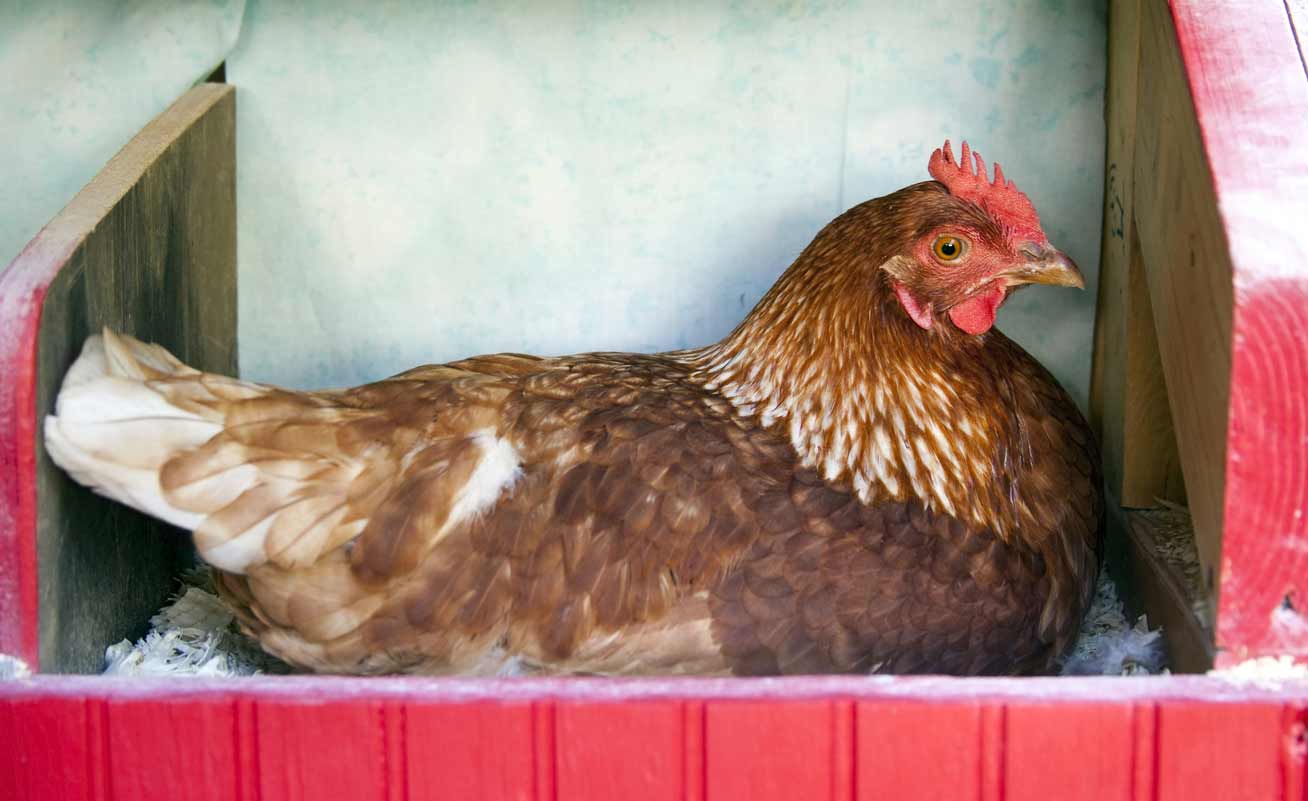If you are looking to raise chickens in your backyard, then one of the most important considerations is to ensure that the chicken nesting box is of adequate size. The size of the chicken nesting box is key to successful chicken husbandry, as it determines the overall comfort and productivity of your chickens. So, the question is: How big does a chicken nesting box need to be?
What is a Chicken Nesting Box?
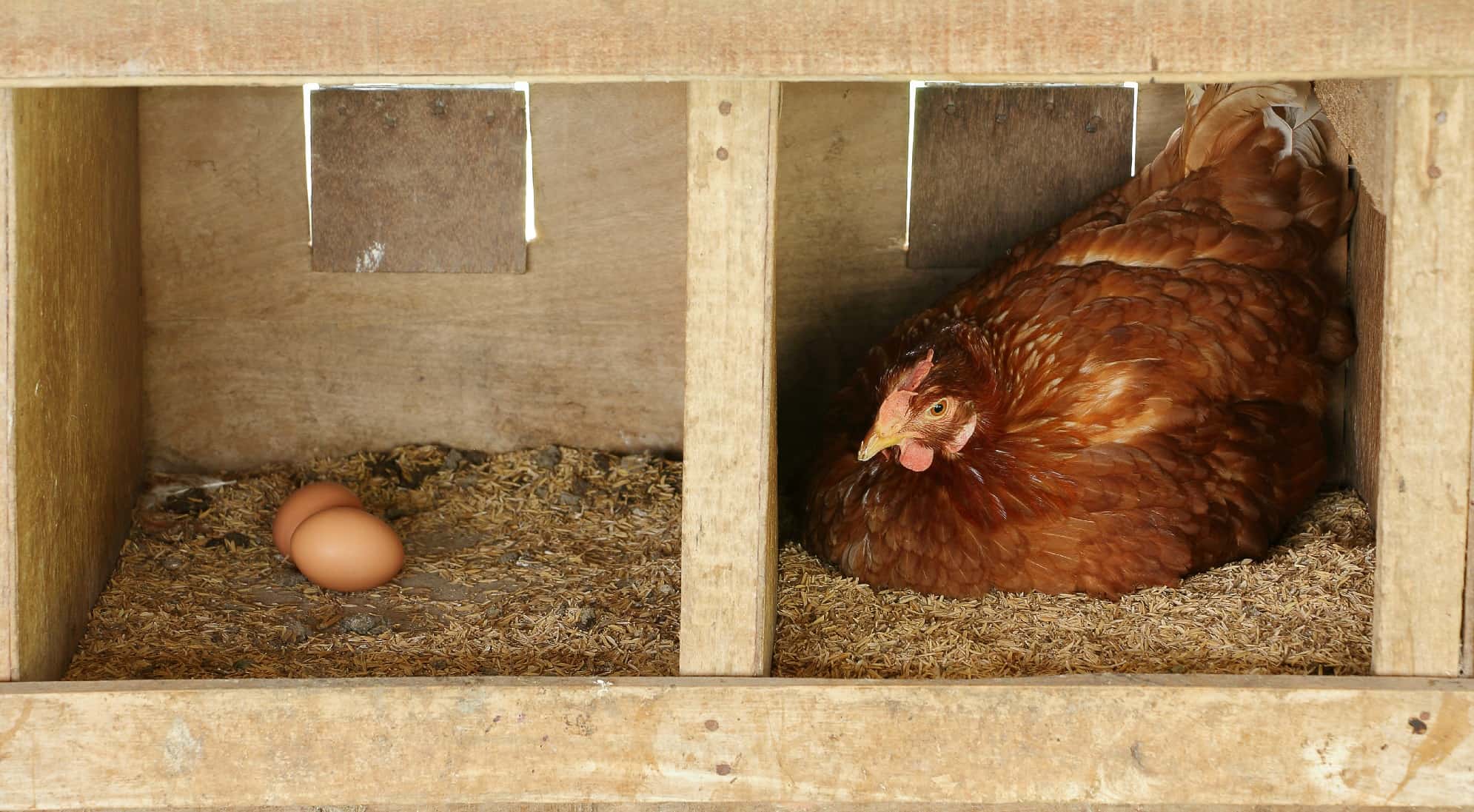
A chicken nesting box is an enclosed compartment where chickens lay their eggs. It is typically made of wood, and is filled with hay or straw to provide extra comfort and insulation. The box is usually placed in a quiet, dark corner of the chicken coop and should be at least 12 inches high and wide, and 8 to 12 inches deep. It should be located at a height that is easy for chickens to access.
The nesting box is a vital part of successful chicken husbandry, as it provides a secure and comfortable place for chickens to lay eggs. A well-designed nesting box should have a sloping top to keep the eggs from rolling out, and enough space to accommodate several chickens. The box should also be kept clean and free from sharp objects that could injure the birds.
In addition to providing a safe place to lay eggs, the nesting box also serves as a place for chickens to hide and sleep. As such, it is important to ensure that the box is large enough to accommodate the chickens without overcrowding, and that it is well ventilated.
| Size | Minimum | Maximum |
|---|---|---|
| Height | 12 inches | – |
| Width | 12 inches | – |
| Depth | 8 inches | 12 inches |
To ensure successful chicken husbandry, it is important to make sure that the chicken nesting box is the right size for the chickens. The box should be large enough for the chicken to comfortably lay their eggs, but not too large as to overcrowd them. It is also important to keep the nesting box clean and free from sharp objects that could injure the birds.
Factors to Consider When Deciding How Big a Chicken Nesting Box Should Be
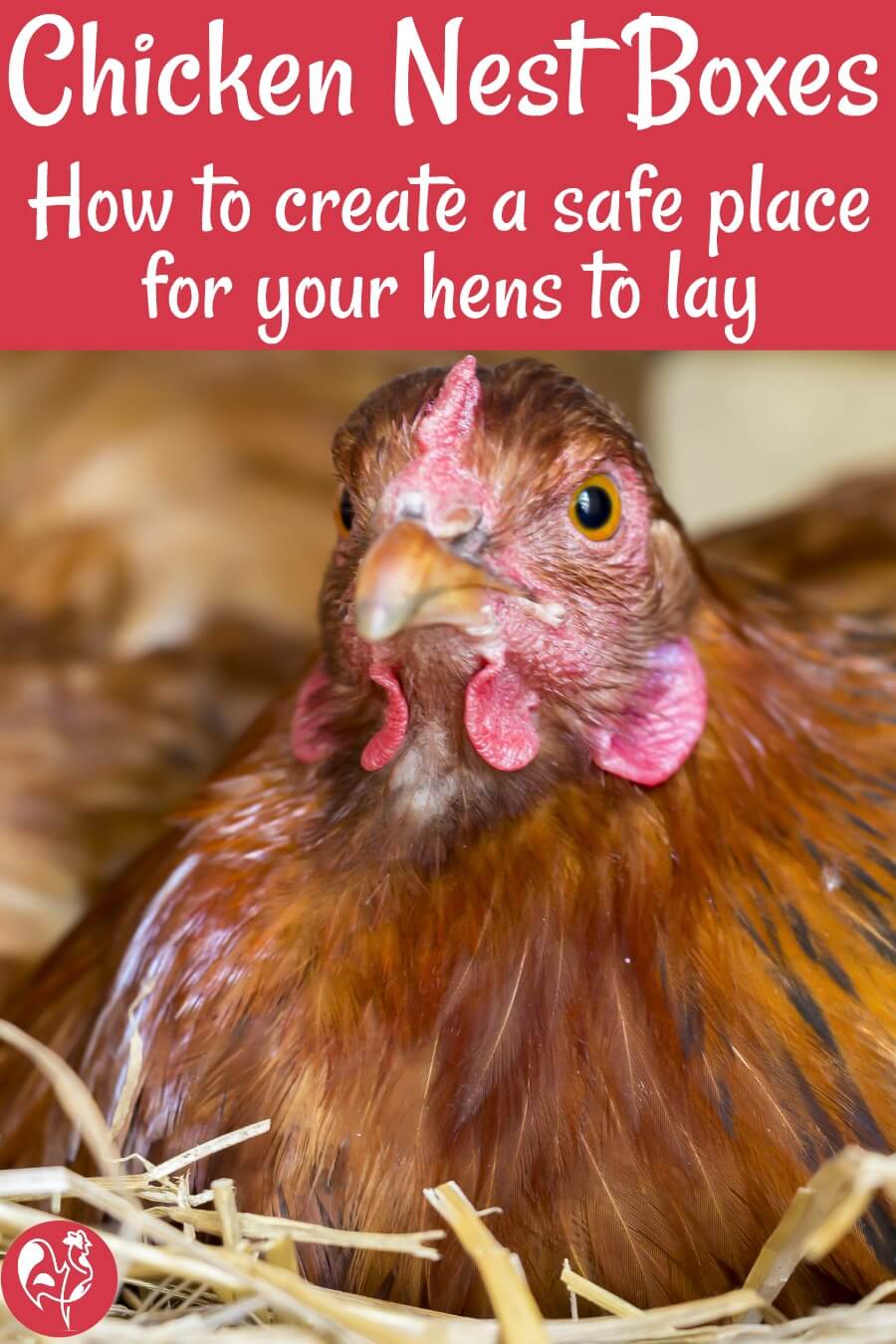
Number of Hens: The size of your chicken nesting box should be based on the number of hens in your flock. A good rule of thumb is to provide one nesting box per 3-5 hens.
Size of the Hen: The size of the hen is also important when determining the size of the nesting box. Smaller hens will need a smaller nesting box, while larger hens will need a bigger box.
Type of Nesting Box: Different types of nesting boxes vary in size. For example, a slatted-wood box is smaller than a plastic tub.
Location: The location of the nesting box is also important. If the nesting box is located in an area with limited space, then a smaller nesting box may be necessary.
Ease of Cleaning: It is important to have a nesting box that is easy to clean. A larger nesting box may be harder to clean, while a smaller nesting box may be easier to clean.
Accessibility: The accessibility of the nesting box should also be taken into consideration. If the nesting box is too small, it may be difficult for the hens to get in and out.
By taking all of these factors into consideration, you will be able to determine the best size for your chicken nesting box. Ultimately, the size of the nesting box should be determined by the size of the flock, the size of the hens, the type of nesting box, the location, and the ease of cleaning. By understanding these factors, you can ensure that your chickens have a safe and comfortable nesting box that meets their needs.
Number of Chickens
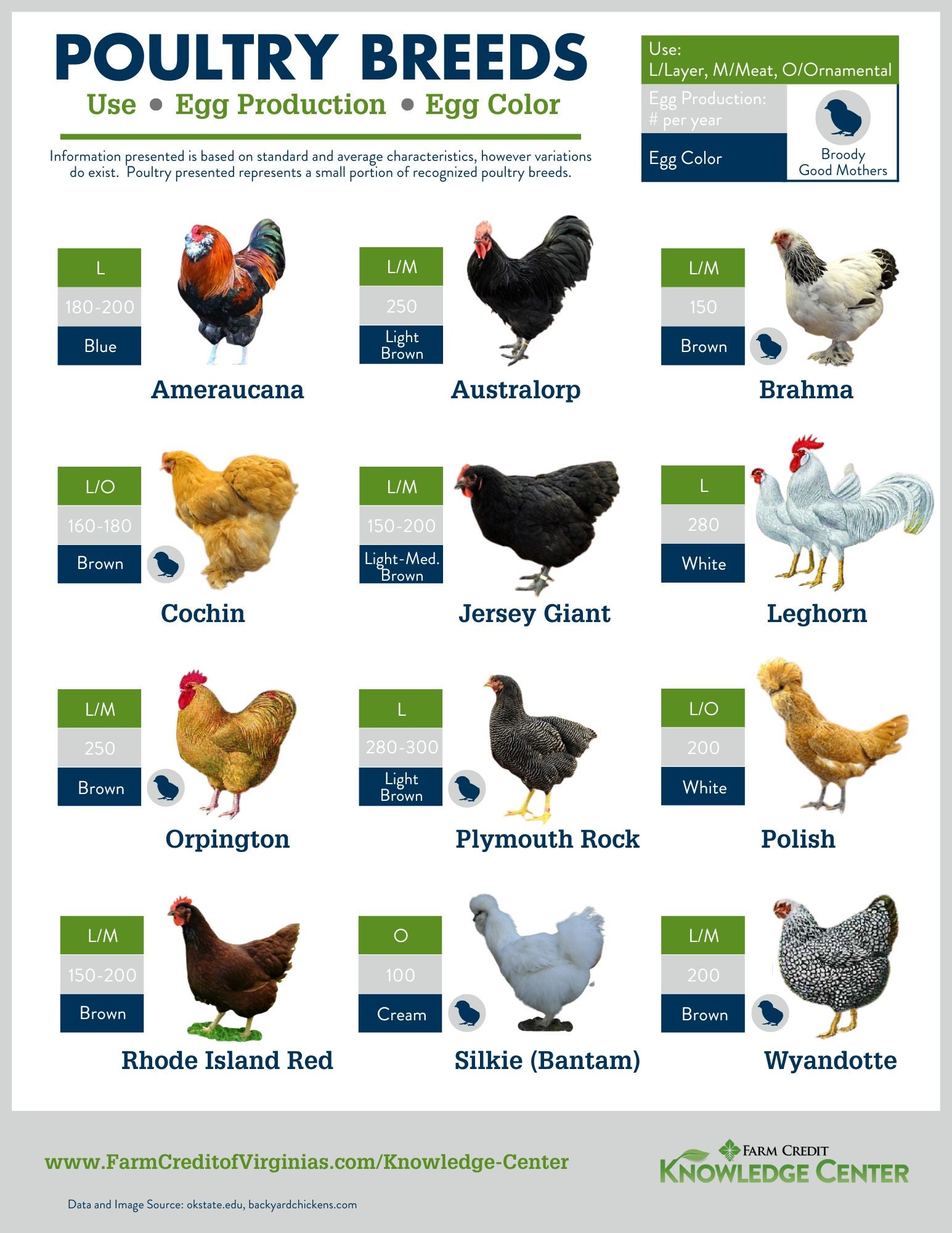
The size of the chicken nesting box should be determined by the number of chickens you intend to keep. Generally, each chicken should have at least 1 square foot of space in the nesting box, so if you intend to keep three chickens, the nesting box should be at least 3 square feet.
| Number of Chickens | Minimum Nesting Box Size |
|---|---|
| 3 | 3 square feet |
| 4 | 4 square feet |
| 5 | 5 square feet |
| 6 | 6 square feet |
| 7 | 7 square feet |
| 8 | 8 square feet |
Therefore, for successful chicken husbandry, it is important to consider the number of chickens when determining the size of the nesting box.
Number of Nesting Boxes
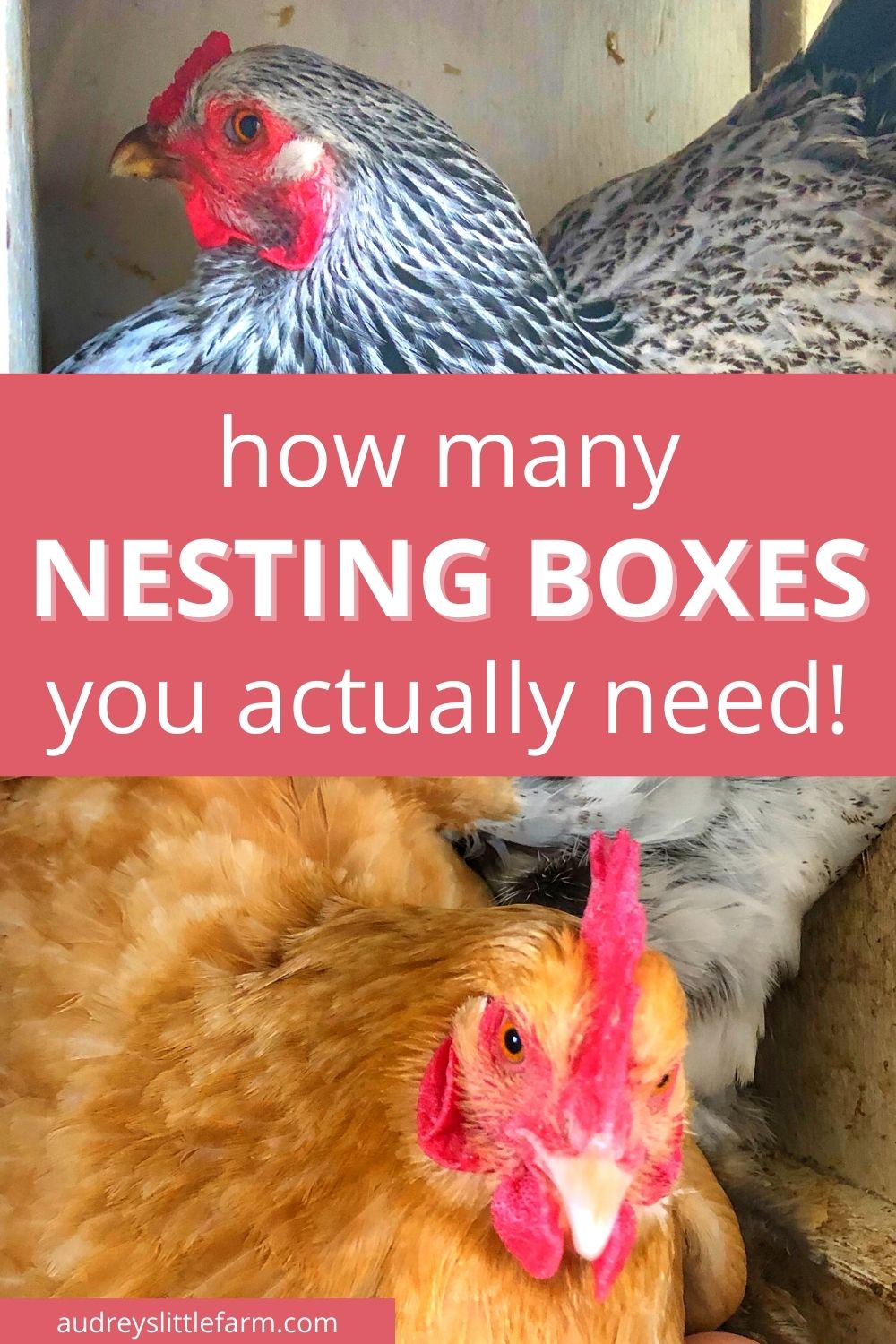
The number of nesting boxes needed for successful chicken husbandry depends on the size of the flock. Generally, one nesting box should be provided for every four to five hens. If the flock contains more than nine hens, it is recommended to provide two nesting boxes for every nine hens. It’s also important to note that the size of the chicken nesting box is just as important as the number of boxes. It is important to provide enough space for each hen to comfortably lay her eggs.
Size of Chicken
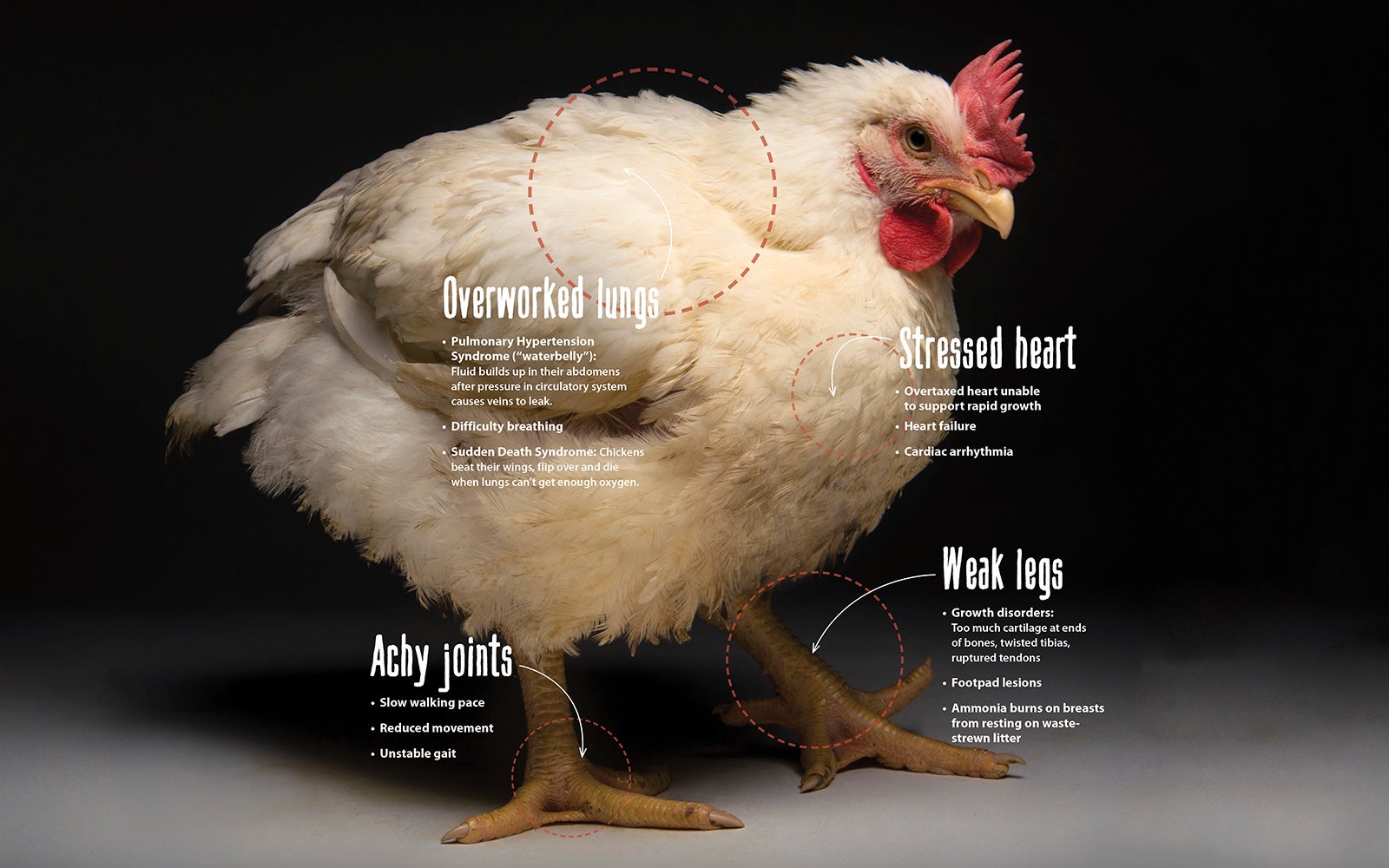
When considering how big should a chicken nesting box be, the size of the chicken should be taken into account. Depending on the breed of chicken, the size of the nesting box will vary. Generally, a minimum of 12 inches in length and 12 inches in width is recommended for a nesting box, as this size will accommodate most breeds of chicken.
For larger breeds, such as Orpingtons, a minimum size of 14 inches in length and 14 inches in width should be provided. This extra space will provide the larger chickens with enough room to move around comfortably while laying their eggs.
In addition to the overall size of the chicken, the size of the individual eggs should also be taken into account when determining the size of the nesting box. For breeds that lay larger eggs, such as Rhode Island Reds, a nesting box should be increased to at least 16 inches in length and 16 inches in width. This will ensure that the eggs will fit in the box without the risk of being broken.
Finally, it is important to ensure that there is enough space in the nesting box for the chicken to move around comfortably. If the nesting box is too crowded, the chickens may feel stressed and be less likely to lay eggs. It is recommended to provide at least 3 inches of space between the walls of the nesting box and the chicken, to ensure that the chicken has enough room to move around.
By taking into account the size of the chicken and the size of the eggs, it is possible to determine the size of the nesting box that is needed for successful chicken husbandry.
Other Considerations
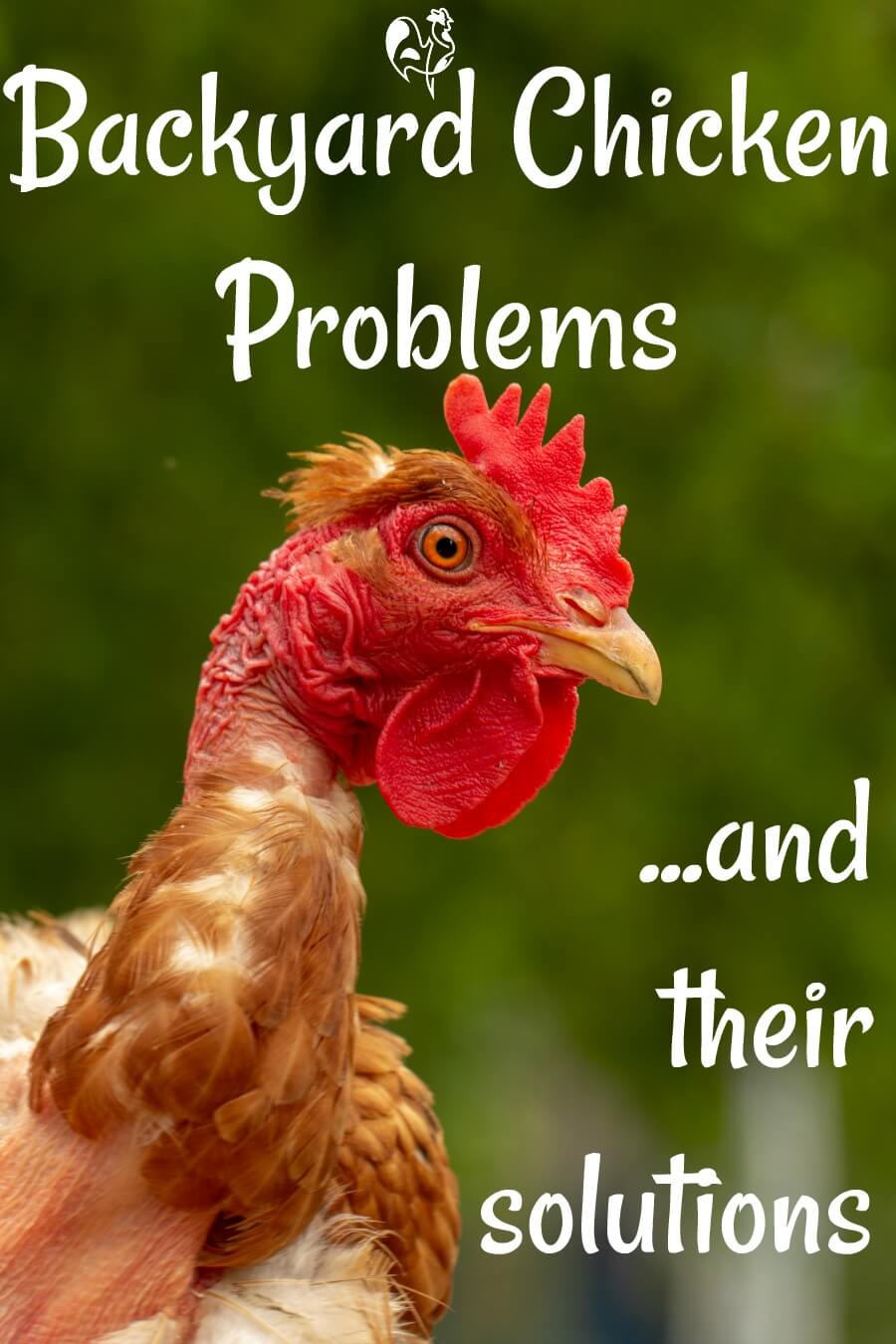
- Location: Place the nesting boxes in a quiet area, away from the main traffic areas, and keep it clean and dry.
- Privacy: Make sure the nesting boxes are in a secluded area, so the chickens feel safe and secure.
- Design: The nesting boxes should be designed in a way that allows easy access and cleaning, as well as adequate ventilation.
- Size: The size of the nesting boxes will depend on the size of the chicken flock. A good size for most flocks is 12 inches square, although larger flocks may require larger boxes.
- Height: The nesting boxes should be at least 18 inches off the ground, to allow the chickens to access them easily.
- Number: Provide at least one nesting box for every three or four chickens in the flock.
- Materials: The nesting box should be made of durable materials, such as wood or plastic, that can withstand wear and tear.
When it comes to how big should chicken nesting boxes be, there are other considerations to keep in mind. Location, privacy, design, size, height, number, and materials all play a role in creating an optimal nesting box for successful chicken husbandry.
How Big Does a Chicken Nesting Box Need to Be?

Chickens require a comfortable nesting box in order to lay eggs successfully. Properly sized nesting boxes will provide chickens with a safe and secure place to lay their eggs. Here are the key factors to consider when determining the size of a chicken nesting box:
- Dimensions: The standard nesting box should measure 12” wide, 12” high, and 12” deep. This size provides enough space for the chickens to move around and lay eggs comfortably.
- Perch: It is important to include a perch on the nesting box. This will allow the chickens to easily access the box and also provide a place for them to rest.
- Number of Nesting Boxes: It is recommended to have 1 nesting box for every 4-5 chickens. If the flock is larger, then more nesting boxes should be provided to ensure the chickens have enough space to lay their eggs.
- Ventilation: It is important to ensure that the nesting box is well-ventilated. This will allow fresh air to flow through the box and help keep the eggs cool.
When considering what size should nesting boxes be for chickens, it is important to keep the above factors in mind. Properly sized nesting boxes are essential for successful chicken husbandry and will help ensure the chickens lay healthy eggs.
Smaller Chickens
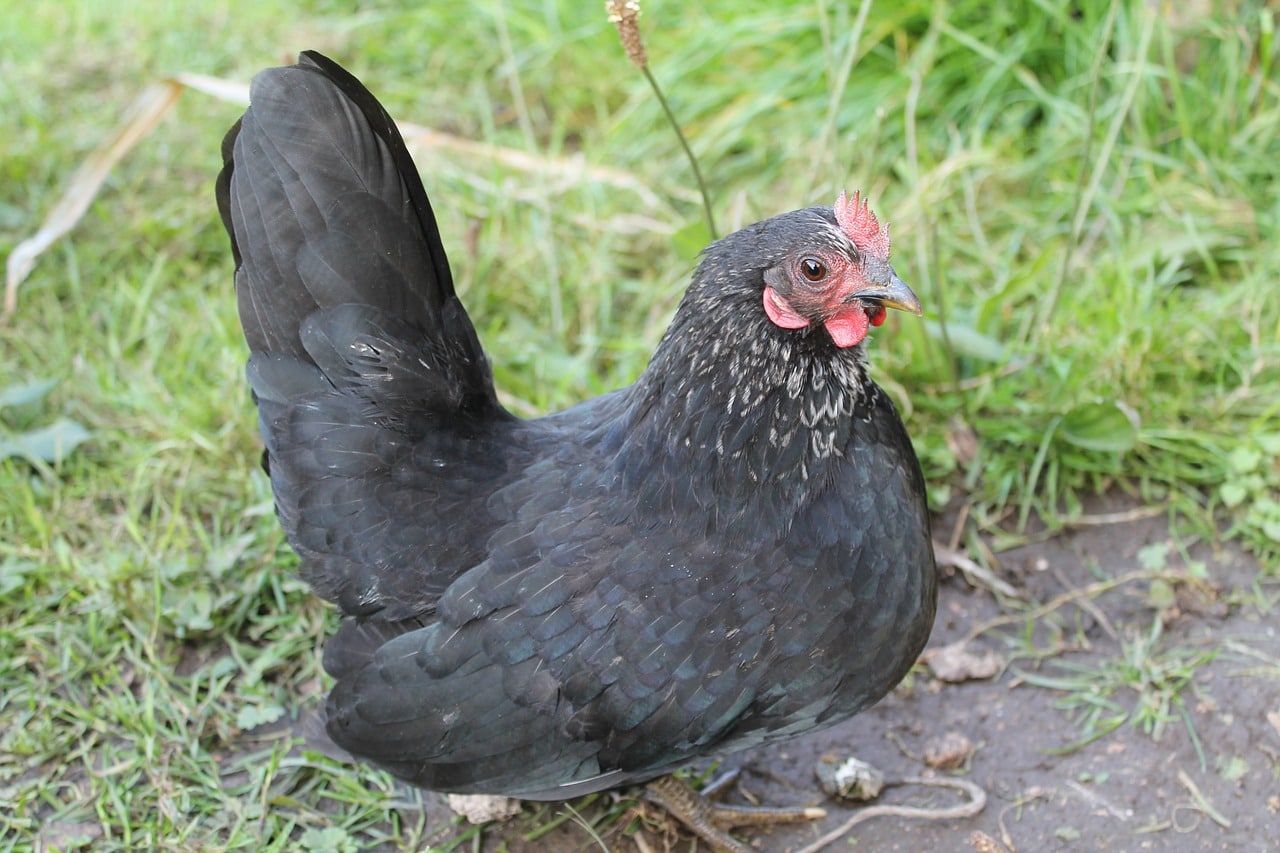
Smaller chickens require a smaller nesting box than their larger counterparts. They are less likely to roost on the edges of the box and will often look for a smaller space to lay their eggs. Smaller breeds may need a nesting box that is only 10 inches wide and 12 inches deep, while larger breeds may need a box that is 12 to 14 inches wide and 14 to 16 inches deep.
- Smaller breeds such as Bantam chickens need a nesting box that is only 10 inches wide and 12 inches deep.
- Larger breeds such as Orpingtons and Barred Rocks need a nesting box that is 12 to 14 inches wide and 14 to 16 inches deep.
- Chickens should be provided with several nesting boxes to ensure that every chicken has a suitable place to lay their eggs.
- Nesting boxes should be placed in a quiet, dark area away from the rest of the flock.
- The nesting box should be lined with straw or other materials to provide a soft and comfortable place for chickens to lay their eggs.
- The nesting box should also be kept clean and free of debris or dirt to prevent parasites or other illnesses.
By taking into consideration the size of the chickens, as well as their needs and preferences, chicken owners can ensure that their flock has a suitable nesting box for successful chicken husbandry.
Larger Chickens
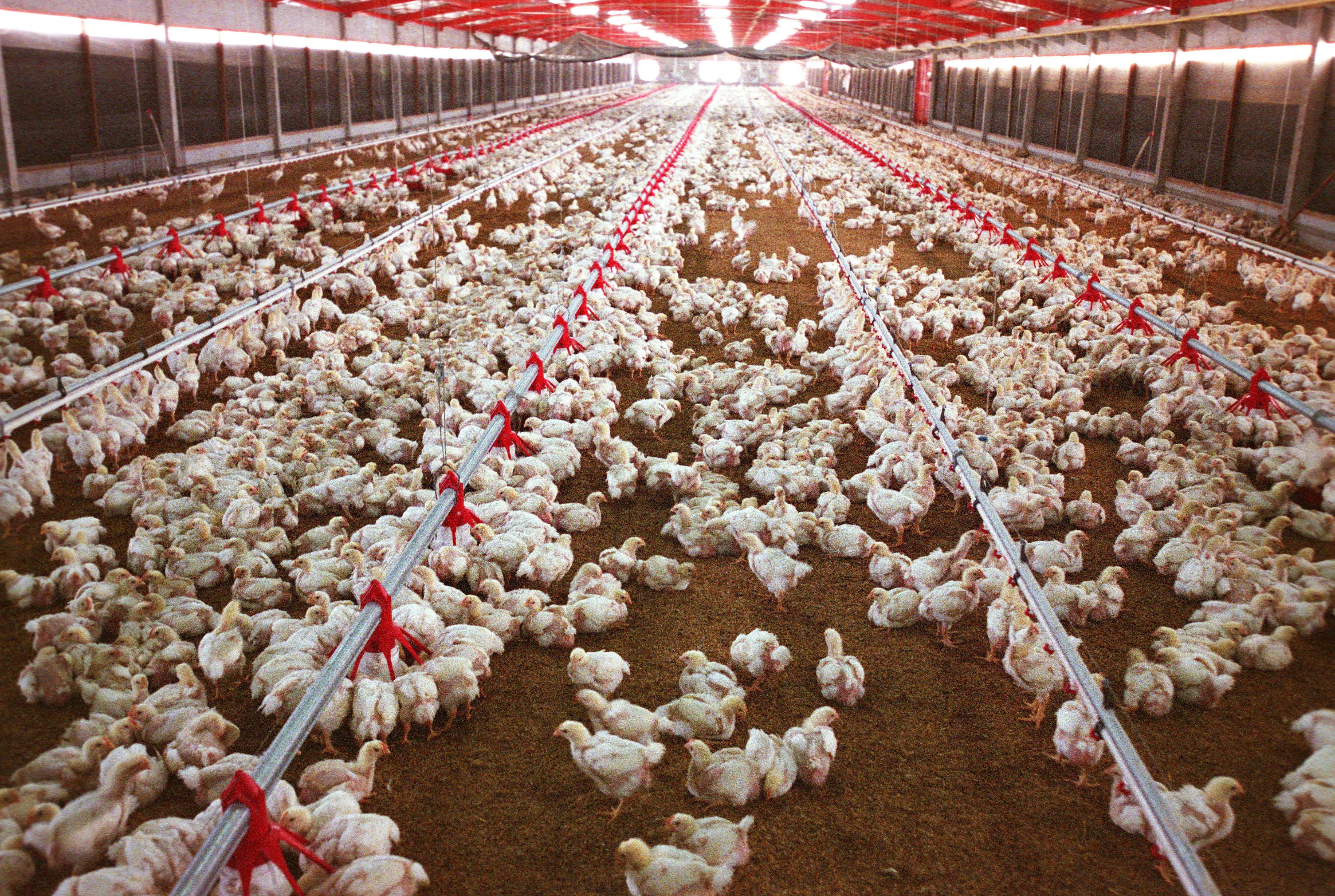
For larger breeds of chickens, such as the Brahma, Cochin, and Orpington, it is important to have a larger nesting box. These breeds need a nesting box that is at least 12 inches wide, 12 inches long, and 8 inches deep. This size will provide enough space for the chickens to move around and make a comfortable nest. Additionally, if the nesting box is too small, the chickens may feel cramped and not lay their eggs inside. Therefore, it is important to make sure the nesting box is large enough to accommodate the size of the chickens.
What Size Should a Chicken Nesting Box Be?

A chicken nesting box should be at least 12” x 12” x 12” in order to provide adequate space for the chickens. The size is important as it needs to be large enough for the chickens to move around in, yet small enough to keep the eggs from rolling around. The walls should be at least 4” high to ensure that the eggs do not roll out. The box should also be deep enough for the chickens to comfortably sit in.
The nesting box should also be well-ventilated to prevent the eggs from becoming too warm or too cold. This is especially important in areas with extreme temperatures. The floor of the box should be covered with some form of bedding to provide insulation and cushioning.
It is also a good idea to provide a few nesting boxes in order to give the chickens more choice. If you have an overcrowded coop, it is recommended to provide one nesting box per four hens. It is also important to place the boxes in areas of the coop that are not too exposed to the elements. This will help to protect the eggs from weather conditions.
Finally, it is important to keep the nesting boxes clean and free of debris. This will help to reduce the spread of bacteria and other pathogens. A regular cleaning schedule should be established in order to ensure the health and safety of the birds.
In conclusion, determining the size of a chicken nesting box is important for successful chicken husbandry. The nesting box should be at least 12” x 12” x 12” and should provide adequate space for the chickens, be well-ventilated, and have a floor covered with some form of bedding. It is also important to provide a few nesting boxes and to keep them clean.
How Big Should a Chicken Nesting Box Be?
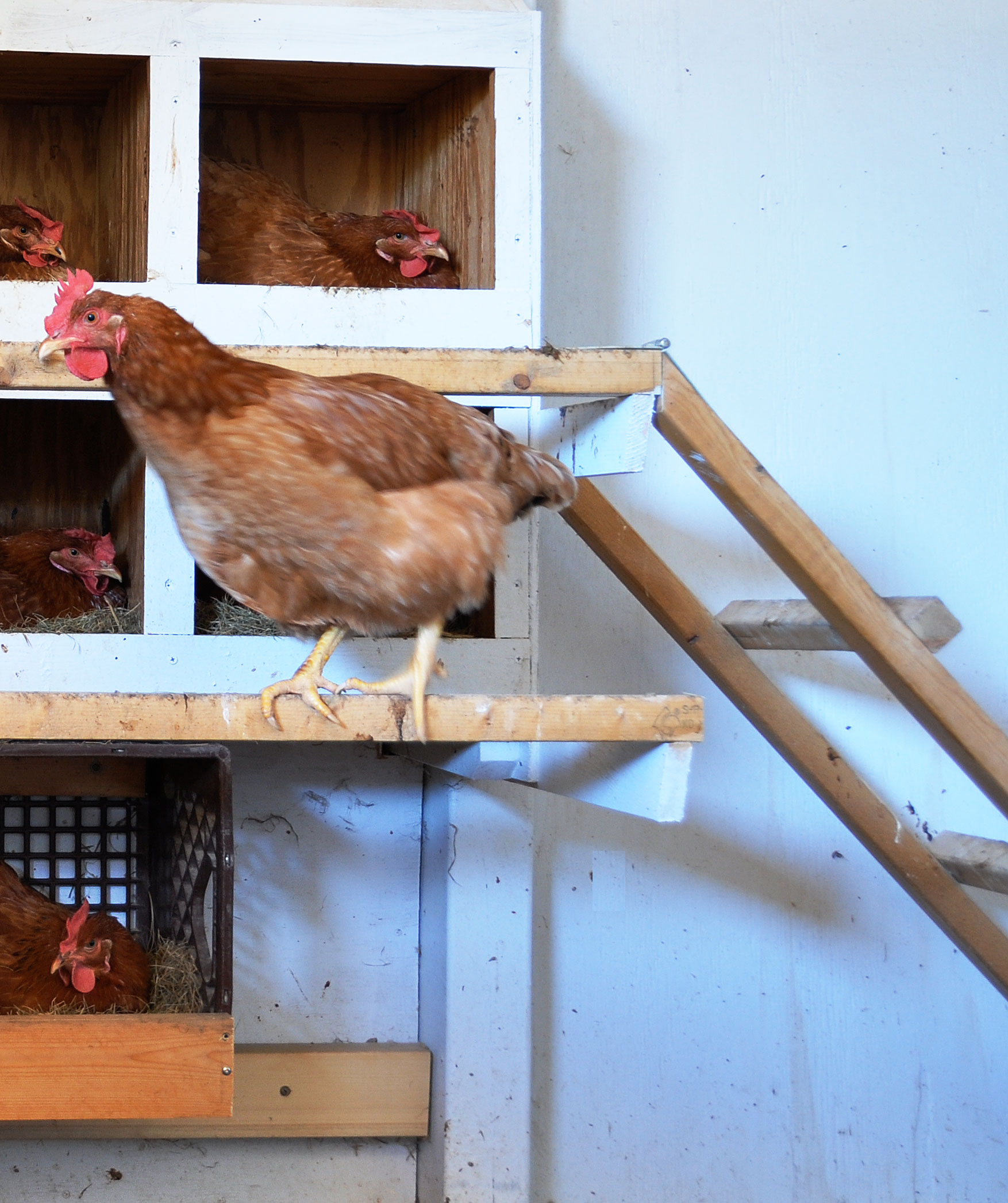
Providing the right size nesting box for your chickens is essential for successful chicken husbandry. The nesting box should be:
- Big enough for the chickens to enter and turn around comfortably. A minimum of 12 inches (30 cm) square is recommended.
- Secure to keep predators out. The nesting box should be tightly fitted and have a secure lid.
- Dry and well-ventilated. The nesting box should be placed in a sheltered area, away from direct sunlight and wind.
- Easy to clean. The nesting box should be easy to access and clean – an ideal size for a single nesting box is 18 inches (45 cm) square.
It is important to make sure the nesting box is the right size for your chickens. Too small and your chickens may not be able to turn around or lay eggs in it. Too big and the chickens may not feel safe and secure. In general, a nesting box should be at least 12 inches (30 cm) square and 18 inches (45 cm) square for larger flocks.
How Big Should Chicken Nesting Boxes Be?
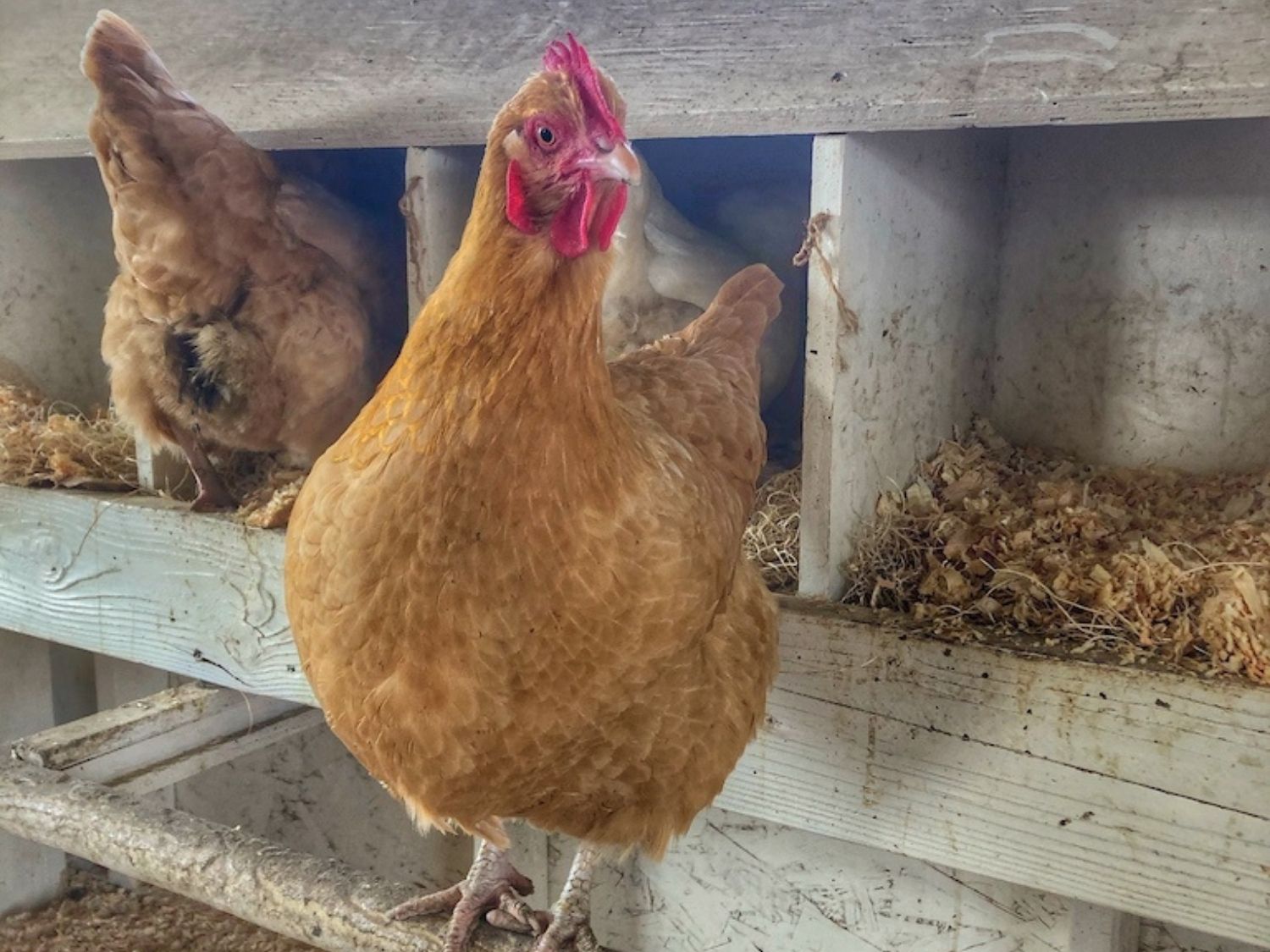
Nesting boxes are an essential part of keeping chickens. They provide the birds with a safe place to lay their eggs and can even help improve egg production. But how big should a chicken nesting box be?
The size of chicken nesting boxes will depend on the size of the chickens, but generally they should be at least 12 inches long, 10 inches wide, and 10 inches tall. A larger box (about 18 inches long, 12 inches wide, and 12 inches tall) is preferable for larger breeds such as Orpingtons and White Leghorns.
| Breed | Size of Nesting Box |
|---|---|
| Small Breeds | 12 inches long, 10 inches wide, 10 inches tall |
| Large Breeds | 18 inches long, 12 inches wide, 12 inches tall |
To ensure that the chickens can move around the nesting box comfortably, the box should not be too small or too large. If the box is too small, the chickens may not be able to enter or turn around inside the box. If it is too large, the chickens may not feel safe and secure.
When placing the nesting boxes in the coop, make sure to leave enough space between the boxes for the chickens to move around freely. It is also important to provide each chicken with its own nesting box to encourage egg laying.
Finally, remember to keep the nesting boxes clean and free from clutter to ensure the health and safety of your chickens.
What Size Should Nesting Boxes Be for Chickens?
When it comes to successful chicken husbandry, the size of the nesting boxes is an important factor. It is important to ensure the right size of nesting boxes so that the chickens can lay their eggs in comfort and security. Here are some guidelines to help you determine the right size of nesting boxes for your chickens:
Measure the chickens: The first step is to measure the size of the chickens in order to determine the size of the nesting boxes. The average size of an adult chicken is about 12 inches long and 8 inches wide, so it is important to measure the chickens in order to ensure that the nesting boxes are big enough for them.
Choose the right material: The next step is to choose the right material for the nesting boxes. It is important to choose a material that is strong, durable, and easy to clean. Wood is the most popular material for nesting boxes as it is both strong and easy to clean.
Choose the right size: Once you have measured the chickens and chosen the right material, it is time to choose the right size for the nesting boxes. Generally, nesting boxes should be at least 12 inches wide, 12 inches deep, and 12 inches high. This ensures that the chickens have enough space to lay their eggs comfortably.
Provide enough boxes: It is important to provide enough nesting boxes for all of the chickens in the flock. Generally, you should provide one nesting box for every three to four chickens. This ensures that each chicken has enough space to lay its eggs without having to compete for space.
Keep the nesting boxes clean: Lastly, it is important to keep the nesting boxes clean and free from debris. This ensures that the eggs are clean and the chickens are safe and comfortable when laying their eggs.
By following these guidelines, you can ensure that the nesting boxes you provide for your chickens are the right size and provide a comfortable and safe environment for the chickens to lay their eggs.
Frequently Asked Questions
What kind of materials should I use to make a chicken nesting box?
When constructing a chicken nesting box, it is important to use materials that are safe, durable and easy to clean. Wood is a popular choice, as it is sturdy and easy to disinfect. However, plastic or metal can also be used, as long as it is safe for animals, and easy to clean. Additionally, the box should have a flat bottom and walls, and be lined with hay or straw for softness and comfort.
What other factors should I consider when setting up a chicken nesting box?
Ventilation: Proper ventilation is essential in the nesting box to allow air to circulate and keep the box dry.
Light: Natural light should be provided to the box to encourage the hens to lay eggs.
Privacy: Nesting boxes should be set up in a quiet and secluded area, away from the hustle and bustle of the coop.
Material: Choose a material that is easy to clean and non-absorbent to protect the eggs from bacteria.
Location: Place the boxes in a shaded area that is easily accessible to the hens.
Size: The box should be big enough for the hens to move around and lay eggs comfortably.
Safety: Make sure the box is secured and safe from predators.
How often should I clean the nesting boxes?
Nesting boxes should be cleaned on a regular basis to ensure a healthy environment for the chickens. The boxes should be cleaned out every 2-4 weeks, depending on the number of chickens in the enclosure. It is important to remove soiled bedding, eggs, and debris from the boxes to prevent the spread of disease. Additionally, make sure to check for pests and predators such as rodents or snakes that may be trying to enter the nesting boxes.
How do I ensure the nesting boxes are properly ventilated?
Ventilation is essential to ensure a healthy and comfortable nesting environment for chickens. Poor ventilation can cause a build-up of moisture and heat, which can lead to respiratory problems and other health issues. Here are some tips to ensure your nesting boxes are properly ventilated:
- Position the nesting boxes away from walls and corners to allow for adequate air circulation.
- Provide an opening at the top of the nesting box for air to enter and exit.
- Install a vent hole in the side of the nesting box to provide additional ventilation.
- Install a small fan in the nesting box to circulate the air.
- Check regularly for signs of condensation, which can be a sign of inadequate ventilation.
By following these tips, you can create a safe and well-ventilated environment for your chickens in their nesting boxes.
How Many Nesting Boxes Should I Provide Per Chicken?
- 1 nesting box is most suitable for each chicken, or up to a maximum of 4 chickens per box.
- You should provide enough nesting boxes so that each chicken has a box to call its own.
- It is important to ensure that the nesting boxes are situated away from the roosting area, as chickens prefer to lay eggs in a quiet and private area.
- The nesting boxes should be elevated off the ground, with a lip around the edges, and made of a material that is easy to clean.
- The nesting boxes should be regularly checked for eggs and cleaned out, to ensure that the chickens remain healthy and productive.
- It is also important to provide enough space for the chickens to move around, as crowded conditions can lead to stress and poor egg production.
Conclusion
Chicken nesting boxes should be large enough to comfortably accommodate the chickens, with enough space between the walls, floor, and ceiling so that the chickens can move freely. The nesting box should also be easy to access for egg collecting and cleaning. A good nesting box should have a solid floor and sides that are at least 12 inches high and provide adequate ventilation. Choosing the right nesting box and making sure it is properly maintained is essential for successful chicken husbandry.
